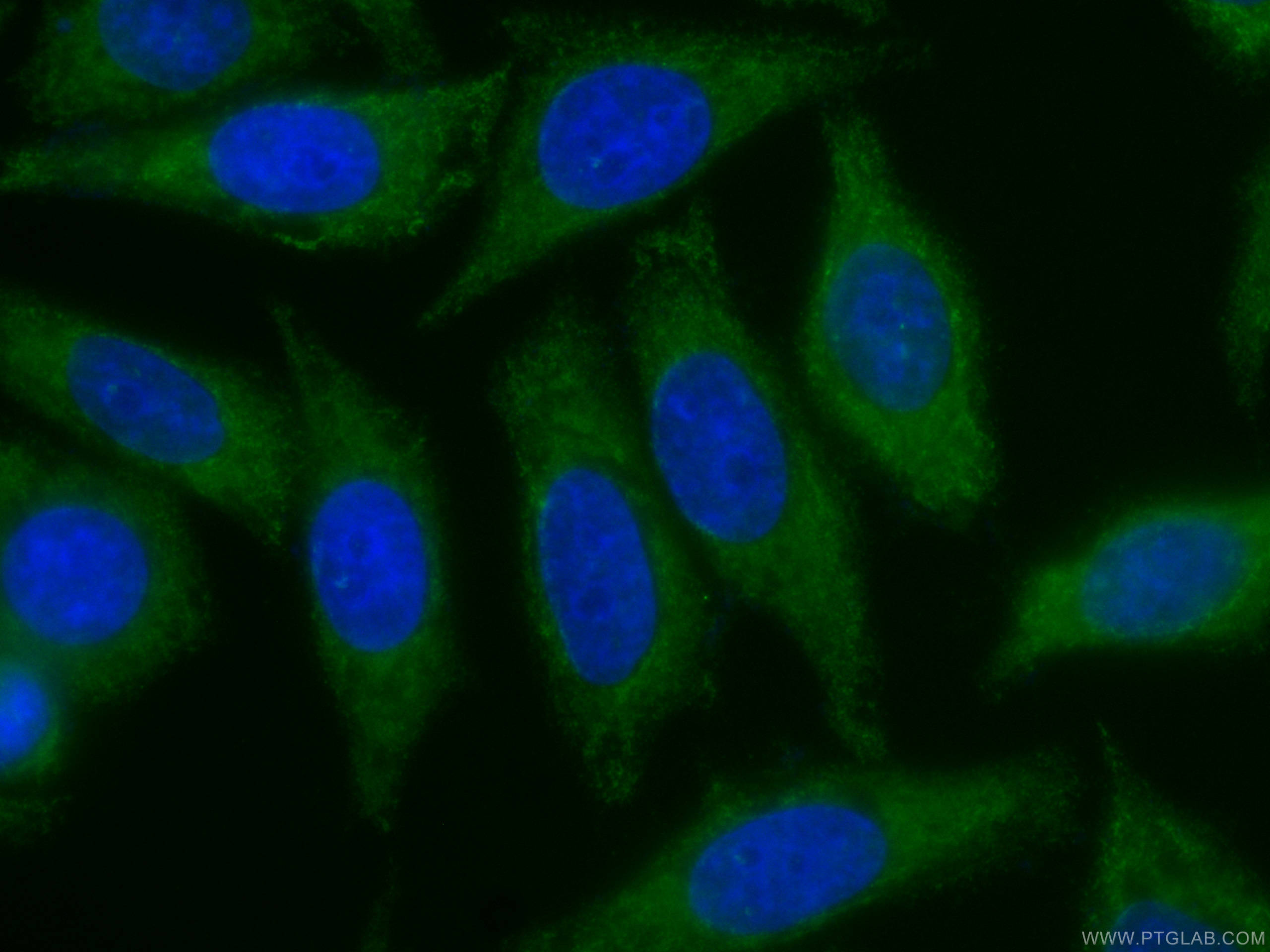Tested Applications
| Positive IF/ICC detected in | HepG2 cells |
Recommended dilution
| Application | Dilution |
|---|---|
| Immunofluorescence (IF)/ICC | IF/ICC : 1:50-1:500 |
| It is recommended that this reagent should be titrated in each testing system to obtain optimal results. | |
| Sample-dependent, Check data in validation data gallery. | |
Product Information
CL488-66413 targets ZC3HAV1 in IF/ICC applications and shows reactivity with human samples.
| Tested Reactivity | human |
| Host / Isotype | Mouse / IgG1 |
| Class | Monoclonal |
| Type | Antibody |
| Immunogen |
CatNo: Ag10364 Product name: Recombinant human ZC3HAV1 protein Source: e coli.-derived, PET28a Tag: 6*His Domain: 1-351 aa of BC025308 Sequence: MADPEVCCFITKILCAHGGRMALDALLQEIALSEPQLCEVLQVAGPDRFVVLETGGEAGITRSVVATTRARVCRRKYCQRPCDNLHLCKLNLLGRCNYSQSERNLCKYSHEVLSEENFKVLKNHELSGLNKEELAVLLLQSDPFFMPEICKSYKGEGRQQICNQQPPCSRLHICDHFTRGNCRFPNCLRSHNLMDRKVLAIMREHGLNPDVVQNIQDICNSKHMQKNPPGPRAPSSHRRNMAYRARSKSRDRFFQGSQEFLASASASAERSCTPSPDQISHRASLEDAPVDDLTRKFTYLGSQDRARPPSGSSKATDLGGTSQAGTSQRFLENGSQEDLLHGNPGSTYLAS Predict reactive species |
| Full Name | zinc finger CCCH-type, antiviral 1 |
| Calculated Molecular Weight | 699aa,78 kDa; 902aa,101 kDa |
| Observed Molecular Weight | 100 kDa |
| GenBank Accession Number | BC025308 |
| Gene Symbol | ZC3HAV1 |
| Gene ID (NCBI) | 56829 |
| RRID | AB_2883331 |
| Conjugate | CoraLite® Plus 488 Fluorescent Dye |
| Excitation/Emission Maxima Wavelengths | 493 nm / 522 nm |
| Form | Liquid |
| Purification Method | Protein G purification |
| UNIPROT ID | Q7Z2W4 |
| Storage Buffer | PBS with 50% glycerol, 0.05% Proclin300, 0.5% BSA, pH 7.3. |
| Storage Conditions | Store at -20°C. Avoid exposure to light. Stable for one year after shipment. Aliquoting is unnecessary for -20oC storage. |
Background Information
he zinc-finger antiviral protein (ZAP) was originally identifed from a rat cDNA library due to its conferring resistance to retroviruses. ZC3HAV1 is a CCCH-type zinc finger protein, it may primarily function to inhibit viral gene expression and induce an innate immunity to viral infection. Alternative splicing occurs at this locus and two variants, each encoding distinct isoforms.
Protocols
| Product Specific Protocols | |
|---|---|
| IF protocol for CL Plus 488 ZC3HAV1 antibody CL488-66413 | Download protocol |
| Standard Protocols | |
|---|---|
| Click here to view our Standard Protocols |




